Contents
1) Le Grand Dérangement2) The British load ships anchored in the Minas Basin with Acadians, separating them from their family members and their belongings
3) Acadian Deportation Destination Map
4) Notes on Ship Arrivals in the New England Colonies
Le Grand Dérangement
The term, Le Grand Dérangement refers to the exodus of Acadians that took place from 1755 to 1762 by order of Governor Lawrence. It is known as the Great Upheaval or Great Disturbance (Grand Dérangement).
The Acadians were forced to leave l'Acadie for a number of reasons:- The Acadians refused to pledge uncondtional allegiance to the King of England and requested that it would not be required of them to bear arms against the French. Governor Lawrence was requiring complete and unconditional Acadian allegiance. For the Acadians who might have signed an unconditional oath, there were numerous reasons why they did not. The difficulty was partly religious, in that the British monarch was the head of the Protestant Church of England. Another issue was that an oath might commit male Acadians to fight against France during wartime. A related concern was whether their Mi'kmaq neighbours might perceive this as acknowledging the British claim to Acadia rather than the Mi'kmaq. As a result, signing an unconditional oath might have put Acadian villages in dangers of attack from Mi'kmaq.
-
At the start of the French and Indian War, the British feared Acadians alliance with the French and Indians, in particular the Mi'kmaq Indians who were considered by the Acadians to be allies, neighbors and family. The Mi'kmaq were known in British circles to stand strong against British forces and were regarded as a brutal warrior force, although they and the Acadians enjoyed a supportive and harmonious alliance.
-
Getting rid of the French Acadians allowed for the English to settle the fertile and rich Acadian land under the British Crown.
 The Grand Dérangement is considered the most important event in Cajun and Acadian history.
The Grand Dérangement is considered the most important event in Cajun and Acadian history.According to (p. 18 - Gregory Wood Acadians in Maryland - A Guide to the Acadians in Maryland in the Eighteenth and Nineteenth Centuries.), the exiles declared their plight to be: "far worse than the old Testament world of Egyptain or Babalonian captivity".
The worse treatment of the Acadian Exiles who were not loss to the ravages of severe storm trodden seas, took place in the New England Colony of Virginia (Click Here to see - Official Records of Robert Dinwidd1e, LIEUTENANT-GOVERNOR OF THE COLONY OF VIRGINIA, 1751-1758). The Virginians took pride that of the 1500 Acadians shipped to Virginia only approximately 500 survived and were allowed to stay in Virginia. Most were loss at sea or redirected to imprisonment in England. The Virginians took great pride in the punishment bestowed on the Acadians for being what the Virginians labeled, "French Catholic Savages". The goal of the Virginians was complete extermination of the Acadian people. Those that did survive were condemed into slavery, working and living with the African American Slaves in Virginia.
The British load ships anchored in the Minas Basin with Acadians, separating them from their family members and their belongings
Bona Arsenault, wrote about the events that led up to the deportation in his book, History of the Acadians. He stated that the deportation began with the British occupation of l'Acadie (Nova Scotia) and the English troops strategically occupied the Acadian villages, burned their homes and arrested anyone who resisted. He also stated that the Catholic priests of the area were arrested and the churches were converted to British barracks.
The British occupation of the area led, in some areas, to fighting between British and Acadians. Acadians at Fort Cumberland were taken prisoner and were almost immediately deported. These Acadians were forced to leave wives, families and children behind.
Winslow took the Acadians of Grand-Pré prisoner on September 5, 1755. On September 10, he ordered the first group of Acadians to be placed on British ships which were anchored in the Minas Basin. These prisoners were comprised of 230 Acadians and were nearly all young men and male children:
"I ordered ye prisoners to march. They all answered they would not go without their fathers. I took hold of (a prisoner) and bid march. He obeyed and the rest followed, though slowly, and went off praying, singing and crying, being met by the women and children all the way, which is 1½ mile, with great lamentations, upon their knees ... Thus ended this painful task of so many heart-breaking scenes."
Arsenault reported that these prisoners were separated from their families, and they occupied holding areas on these anchored ships for nearly a month until more ships arrived on October 7. On October 8, the British were ordered to load Acadian women and children. They hurriedly forced them on board the ships without organization or regard for their possessions or family members. Hundreds of these Acadians were separated from their relatives. The British troops were originally ordered to begin loading the Acadians on board the ships on the 7th, but rainy weather delayed this commencement to the 8th. The ships, the Elizabeth and the Leynord were the first to be loaded with approximately 80 Acadian families from the Grand-Pré region. Shockingly, many of their belongings were found 6 years later by the English Settlers of Nova Scotia. These belongings were reportedly sitting near the shore of the Minas Basin where the Acadians had been forced to leave them while being dragged onto the ships.
Acadian Deportation Destination Map
In the Grand Dérangement, nearly 12,000 Acadians, which comprised approximately three-fourths of the Acadian population in Nova Scotia, were expelled from the colony between 1755 and 1764. The British destroyed Acadian houses and dispersed the Acadians among the 13 colonies from Massachusetts to Georgia. Many Acadians were held on the ships at port in the colonies for three months or more, only to be redirected to ports in England, France and other points in Europe.
It is known that at least three ships filled with deported Acadians sunk to the bottom of the ocean resulting in the events that produced the most immediate and greatest number of Acadian deaths. The ships which are known to have sunk were carrying Acadians from Louisbourg, Nova Scotia. They are the "Duke William" with over 360 Acadians on board and the "Violet" with over 280 Acadians on board. Another ship, the "Ruby" with over 310 Acadians on board, ran aground in a storm on the island of Pico in the Azores, killing 213 of the boarded Acadians. The sinking of the "Union" was not witnessed or documented as were the "Duke William" and the "Violet", but after leaving l'Acadie filled with deported Acadians, it was never to be seen or heard from again.
Notes on Ship Arrivals in the New England Colonies
|
The First Acadian Deportation Ships began arriving at the British Colony Ports November 20, 1755. Although the ships began to arrive, the captains of these ships were given orders to remain in port and keep the Acadians on the ships. Thus begins the second phase of Le Grand Dérangement in which the Acadians were held as prisoners on the ships and were refused permission to disembark. The Acadians arrived in the British colonies at the worst possible time. From " Star-Democrat Weekend Magazine, February 15, 1980; REFUGEES, ESPECIALLY FRENCH CATHOLICS WITHOUT FUNDS FOUND CHILLY RECEPTION HERE; (First of two Articles);by Dickson J. Preston": "England and France were in a state of undeclared war, and things were going badly for the English colonists in America. In July 1755 had come word of General Braddock's terrible defeat at Fort Duquesne, during which only young Col. George Washington of Virginia had shown military skill. All along the frontiers, the French and Indians were on the attack, murdering settlers, burning forts and houses, capturing livestock and carrying off scalps as trophies of war." The Acadian exiles were unloaded in Maryland "just when the waves of Francophobia and anti-Catholicism had crested. (Brasseaux - FOUNDING OF A NEW ACADIA - p. 37) This hostile attitude was strengthened by the articles that had been appearing in the Maryland Gazette throughout the summer and early fall of 1755 describing, what was obviously false rumors and accounts of murder and laying the country to waste being committed by the French and their Indian allies. Basil Sollers in his "The Acadians (French Neutrals) Transported to Maryland" that appeared in the Maryland Historical Magazine Vol III - March, 1908 - No. 1", reports on the propaganda and inflamatory articles that appeared in the Maryland Gazette in the summer and early fall of 1755. (Basil Sollers - THE ACADIANS (FRENCH NEUTRALS) TRANSPORTED TO MARYLAND , pp 1-5) Many of the ships held the Acadians on board at port for between three and six months as they began to die from starvation, the horrific spread of fatal disease, and wretched sanitation conditions. The crowding of the ships made conditions aboard the vessels dangerous to health. November 20, 1755 The Maryland Gazette announces the arrival of the first ship at Annapolis, Maryland, the Leopard, with 178 Acadian passengers from the region of Grand-Pré. The Ranger will arrive a few days later with 208 Acadians from Pigiguit. 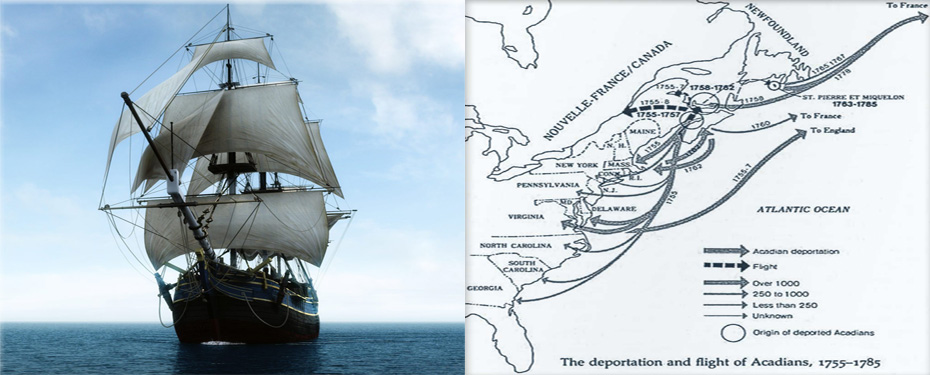
The Leopard (87 tons burden, Thomas Church, master) with 178 passengers, an excess of 4 arrived in Annapolis harbor on November 20, 1755, followed by the Elizabeth (93 tons burden, Nathaniel Milbury, master), with 242 passengers, an excess of 56 over her complement. These two ships carried the Acadians from Grand Pré. (Basil Sollers - THE ACADIANS (FRENCH NEUTRALS) TRANSPORTED TO MARYLAND , p 7) The captains were refused immediate landing in the absence of Governor Sharpe, by the Maryland council. The captain of the Elizabeth, Nathanial Milberry, filed a complaint to the Maryland Council, stating that he was ordered to the Wicomico River area of the Eastern Shore to wait Governor Sharpe's review, but that no provisions were made for any compensation for food and supplies. ( Gregory Wood Acadians in Maryland - A Guide to the Acadians in Maryland in the Eighteenth and Nineteenth Centuries.) Less than a year after Le Grand Dérangement, legislation was passed in Maryland, which authorized the imprisonment of homeless Acadians and the “binding out” of their children to other families. The Acadians were quartered virtually as prisoners, not to leave town without a written permit of the selectmen under penalty of five days in prison or ten lashes. they depended on the cold hand of the public for food clothes and lodging and were given some provisions. (27 May 1756, Proceedings and Acts of the General Assembly of Maryland -[ Baltimore, 1930] 24: 542 ff. - also Sollers "The Acadians (French Neutrals) Transported to Maryland" - Maryland Historical Magazine 3 (1907): 18. Governors of the colonies received the Acadians with varying degrees of hostility. Governor Dulany of Maryland wrote: "They have eaten us up" The death toll in Maryland was heavy and by the time of the census of 1763, the population shrank from 913 in December, 1755 to 667 in 1763. Approximately 27% of the Acadians that were in Maryland died. 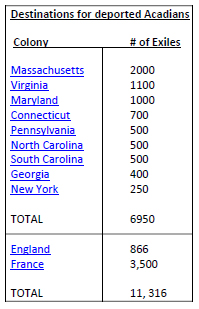
Statistics for the British colonies found in Geoffrey Plank. Unsettled Conquest. University of Pennsylvania Press. 2001. p. 149. Click here for the Official Records of Robert Dinwiddie, LIEUTENANT-GOVERNOR OF THE COLONY OF VIRGINIA, 1751-1758 and to obtain an idea of the utter malice and dissent that the British held for the Acadians. |
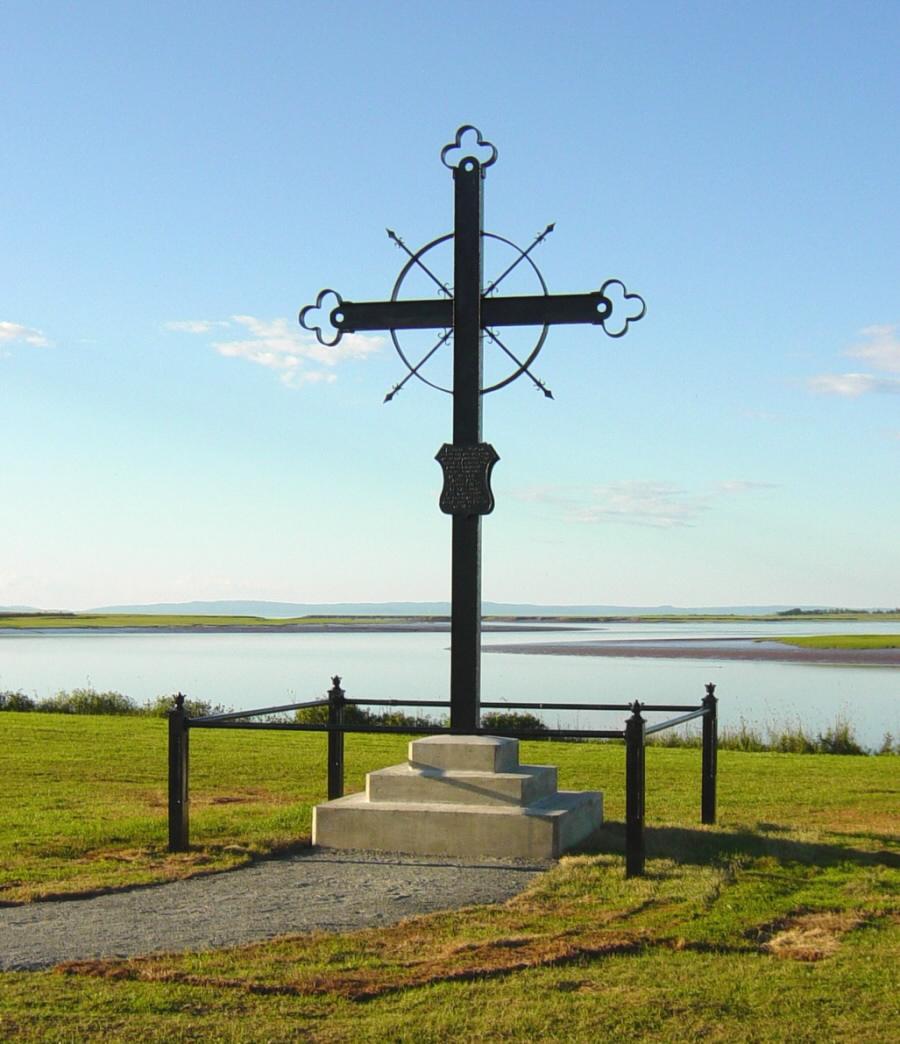 Deportation Croix - 2006 |
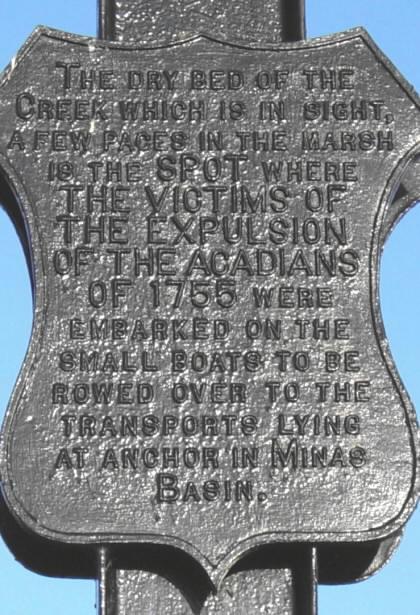 Deportation Croix - 2006 |
||
|
Deportation CroixLocated at Horton's Landing, Grand-Pré, Nova Scotia
"THE DRY BED OF THE CREEK WHICH IS IN SIGHT, A FEW PACES IN THE MARSH IS THE SPOT WHERE THE VICTIMS OF THE EXPULSION OF THE ACADIANS OF 1755 WERE EMBARKED ON THE SMALL BOATS TO BE ROWED OVER TO THE TRANSPORTS LYING IN ANCHOR IN MINAS BASIN" |
|||
Page Sources:
Maryland Historical Magazine - Vol. III No. 1, March 1908 - "The Acadians (French Neutrals) Transported to Maryland" - Basil Sollers
Ried, John. Nova Scotia: A Pocket History. Fernwood Publishing. 2009
Faragher, John Mack, A Great and Noble Scheme New York; W. W. Norton & Company, 2005
Geoffery Plank. An Unsettled Conquest. University of Pennsylvania. 2001
Arsenault, Bona and Pascal Alain (2004). Histoire des Acadiens, Saint-Laurent, Québec: Éditions Fides
Brenda Dunn. A History of Port Royal, Annapolis Royal: 1605-1800. Nimbus Publishing, 2004.
"Indian-White Relations in Nova Scotia, 1749-61: A Study in Political Interaction." Buckner, P, Campbell, G. and Frank, D. (eds)
The Acadiensis Reader Vol 1: Atlantic Canada Before Confederation. 1998.
Expelled from Nova Scotia, Acadians head southward, Alice Ferguson, Lafayette (LA) Daily Advertiser, June 13, 1994
Doughty, Arthur G. (1916). The Acadian Exiles. A Chronicle of the Land of Evangeline, Toronto: Glasgow, Brook & Co.
BALTIMORE: ITS HISTORY AND ITS PEOPLE; BY VARIOUS CONTRIBUTORS; CLAYTON COLMAN HALL, LL.B., A.M. GENERAL EDITOR; VOLUME I HISTORY; LEWIS HISTORICAL PUBLISHING COMPANY; NEW YORK CHICAGO; 1912
THE SHIPS OF THE ACADIAN EXPULSION A Compilation Of Information On The Eighteenth Century Transport Vessels, Used By The British To Transport The Acadians, (Neutral French), During The Acadian Expulsion Of 1755; Click for Web Page; By DR. DON LANDRY, D.D.S. 6512 Schouest Street Metairie, Louisiana 70003 1-504-455-5596 (All Rights Reserved)
Canada's National History Society; The Beaver: Exploring Canada's History; June 2005
ACADIA"-Edourd Richard Vol. 2, Chapter XXXI, pp. 120-121
Maryland Historical Magazine Vol III #1 March 1908 - The Acadians (French Neutrals) Transported to Maryland - Basil Sollers
Naomi E.S. Griffiths - "THE ACADIAN DEPORTATION: Deliberate Perfidy or Cruel Necessity" - p. 143 [quoting a manuscript account of Brown compiled in 1760's]
Gregory A. Wood - THE FRENCH PRESENCE IN MARYLAND - 1524-1800 - p. 65-66
p. 280 of SELECTIONS FROM PUBLIC DOCUMENTS OF THE PROVINCE OF NOVA SCOTIA, Published by resolution of the House of Assembly on March 15, 1865 in 1869
The British Empire Before The American Revolution - Vol. VI by Lawrence Henry Gipson 281
The Acadian Exiles A Chronicle of the Land of Evangeline by Arthur G. Doughty
ACCOUNT OF THE DEPORTATION OF THE ACADIANS FROM "HALIBURTON'S HISTORICAL AND STATISTICAL ACCOUNT OF NOVA SCOTIA."
THE WHOLE HISTORY OF GRANDFATHER'S CHAIR or TRUE STORIES FROM NEW ENGLAND HISTORY, 1620-1808; By Nathaniel Hawthorne (1841)
Acadia; or a Month with the Blue Noses, by Frederic S. Cozzens; Derby & Jackson, New York, 1859; pp. 302-314.
Statistics for the British colonies found in Geoffrey Plank. Unsettled Conquest. University of Pennsylvania Press. 2001. p. 149.
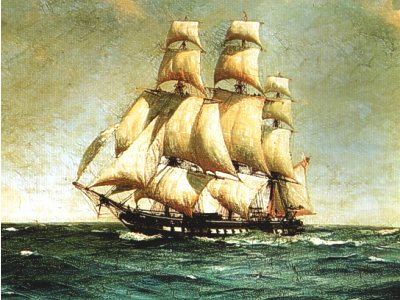
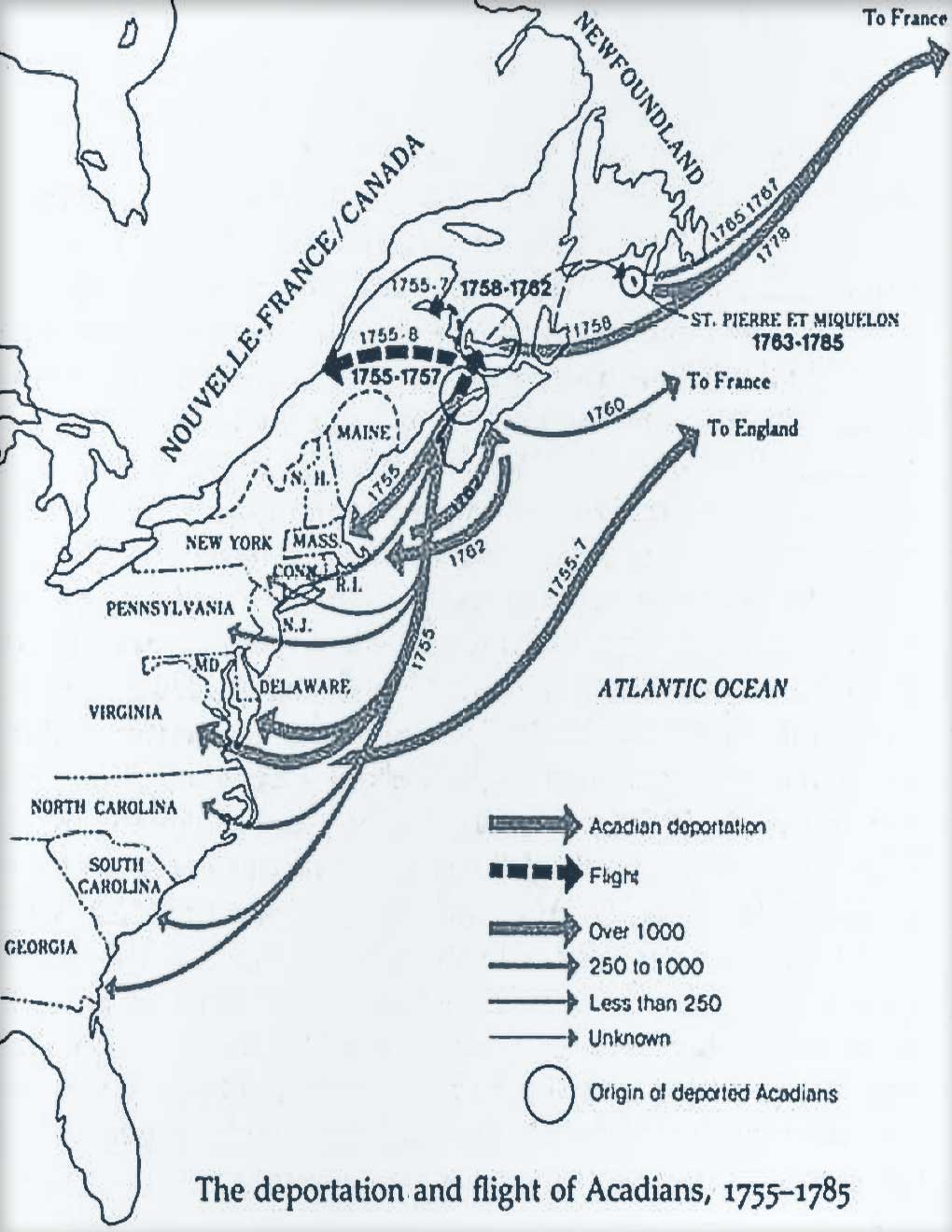
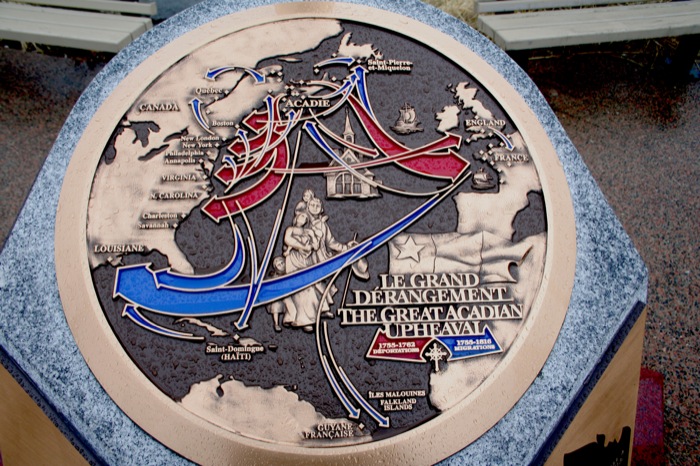
 yahoo.com
yahoo.com